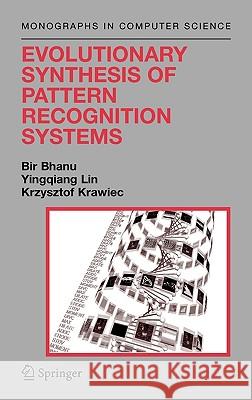Evolutionary Synthesis of Pattern Recognition Systems » książka
Evolutionary Synthesis of Pattern Recognition Systems
ISBN-13: 9780387212951 / Angielski / Twarda / 2005 / 296 str.
Evolutionary computation is becoming increasingly important for computer vision and pattern recognition and provides a systematic way of synthesis and analysis of object detection and recognition systems. Incorporating "learning" into recognition systems will enable these systems to automatically generate new features on the fly and cleverly select a good subset of features according to the type of objects and images to which they are applied. This unique monograph investigates evolutionary computational techniques---such as genetic programming, linear genetic programming, coevolutionary genetic programming and genetic algorithms---to automate the synthesis and analysis of object detection and recognition systems. The book achieves four aims: *Shows the efficacy of genetic programming and coevolutionary genetic programming in synthesizing effective composite operators and composite features from domain-independent primitive image processing operations and primitive features (both elementary and complex) for object detection and recognition. *Integrates smart crossover, smart mutation and a new fitness function based on minimum description length (MDL) principle in a design to improve genetic programming's efficiency *Proposes a new MDL-based fitness function to improve the genetic algorithm s performance on feature selection for object detection and recognition. *Synthesizes recognition systems by using adaptive coevolutionary linear genetic programming (LGP) in conjunction with general computer vision and image processing operators The purpose of incorporating learning into the system design is to avoid the time-consuming process of feature generation and selection and to reduce the cost of building object detection and recognition systems. Researchers, professionals, engineers, and students working in computer vision, pattern recognition, target recognition, machine learning, evolutionary learning, image processing, knowledge discovery and data mining, cybernetics, robotics, automation and psychology will find this well-developed and organized volume an invaluable resource."











